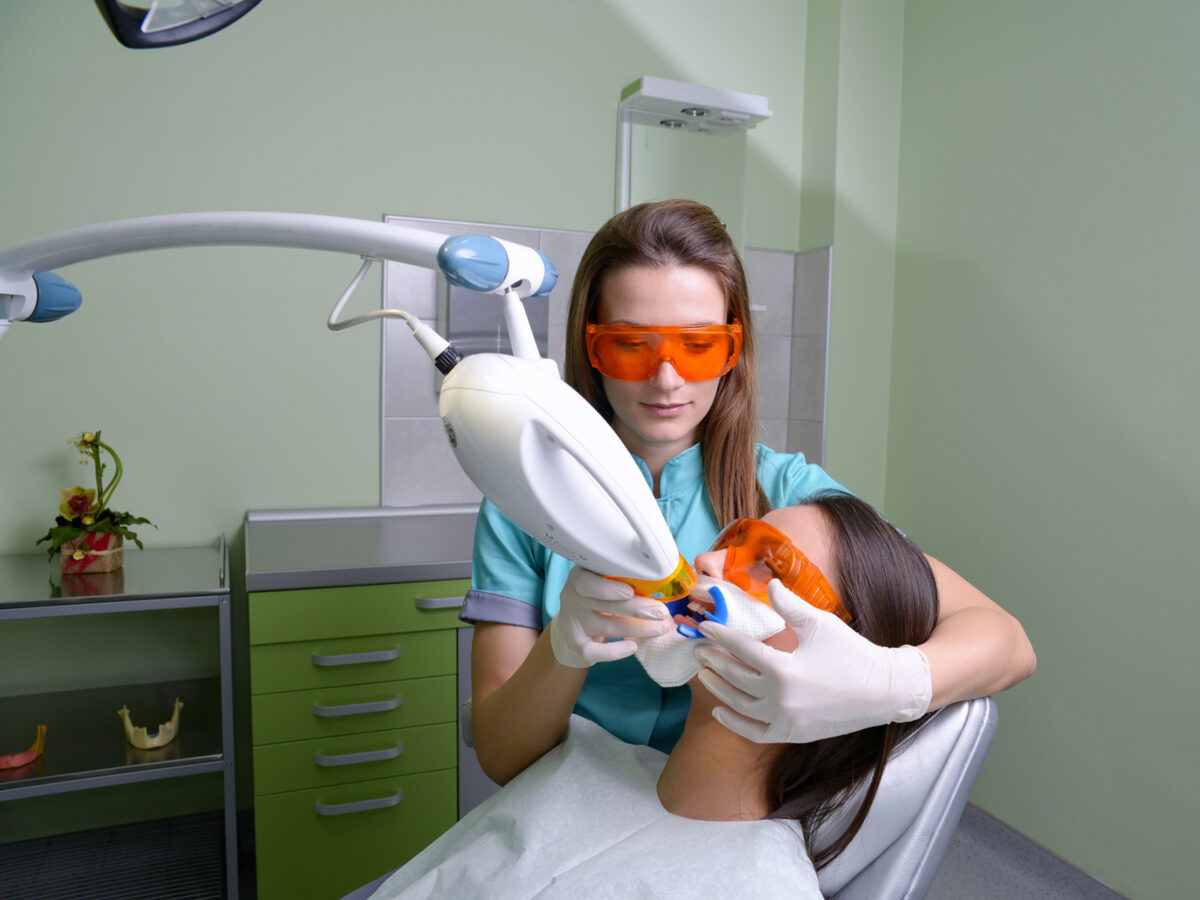Blog
Dental hygiene tips for healthy teeth & gums

Does Blue Light Whitening Really Work?
A smile is definitely a significant social asset for us humans, and if you have got stained teeth due to any reason, it is pretty noticeable when you speak or laugh, which makes you self-conscious. Most of us strive to have white teeth and a dazzling smile and look for ways to achieve that. Though having crooked teeth, gaps in the oral structure, or missing teeth can also be a matter of concern for many of us, the number one factor that everyone wants to change about their smile is the color of their teeth.
There are many over-the-counter teeth whitening products available in the market which have little effect but do not give satisfactory results. These products can lighten your teeth with continued usage over a long period of time; you do not get a real shade difference by using them. It would take you weeks or months to achieve very little teeth whitening with these OTC products.
With professional teeth whitening procedures, you get a high concentration of teeth whitening products to get immediate results. Along with the products, your dentist would often use LED blue rays, which aid in further whitening and brightening of teeth.
If you wish to learn more about the blue light whitening procedure and its effectiveness, this article is just for you.
What is Blue Light Treatment For Teeth?
Any gel used in teeth brightening procedures primarily contains hydrogen peroxide or its close derivative known as carbamide peroxide. They contain oxygen and hydrogen, and when these molecules come in contact with our teeth, oxygen, and hydrogen particles break apart, causing a deep cleaning action.
- The molecules in these agents get activated by coming in contact with your teeth, at high temperatures, or getting exposed to UV (ultraviolet) rays.
- UV ray is the frequency of light that has been shown to accelerate the whitening process. UV rays are most commonly associated with sunlight, greenhouse lights, tanning bed lights, and also a dentist’s laser teeth brightening device.
- These HEV (high-energy visible) rays have the potential to accelerate the activation of carbamide and hydrogen peroxide.
How Does Blue LED Treatment Work?
While performing the LED teeth brightening procedure, your dentist would first apply a chemical agent on your teeth that has bleaching properties.
- The LED then uses the blue light to activate the whitening agent and start the chemical reaction.
- The HEV rays then penetrate the teeth’s enamel, removing existing stains.
- The LED rays can not change the color of your teeth on its own. It is more like a catalyst that speeds up the chemical reaction that a brightening agent causes.
What Are the Different Types of Lights Used in Teeth Whitening?
Primarily three types of lights are used for brightening your teeth, as outlined below:
- UV – It is a kind of magnetic radiation that causes heat in the teeth brightening process. In teeth whitening, dentists use lasers as a type of UV ray.
- LED – Light-emitting diodes emit blue rays, which speed up the teeth brightening procedure without causing heat radiations to the teeth.
- Halogen – It uses metal tungsten to produce heat.
How Effective is the Blue LED Whitening Treatment?
The LED’s cerulean rays boost the teeth’ brightening process and deliver a faster and more intense bleaching effect.
- Research shows that the use of blue LED rays activation increases the whitening effect of the tooth shade.
- The teeth maintain their white shade for a longer time with blue LED treatment than with a non-light activated teeth brightening process.
Is the Use of Blue Light or Laser For Teeth Lightening Safe?
It depends on how safely your dentist uses the lights during the procedure.
- UV rays are a risk if not used properly. It can cause burning of soft tissues, damage to teeth, irritation in gum, and an increase in teeth sensitivity. It is essential that your dentist takes all precautions to ensure your teeth and gums are protected.
- Some of the factors that can increase the risk of side effects from blue LED treatment are:
- The concentration of the bleaching material.
- The formula used in the whitening product.
- Duration of the LED treatment.
- Not following the instructions given by the product manufacturer.
- A more severe side effect of this treatment is teeth demineralization due to overexposure of teeth to bleaching agents.
- Another severe side effect of this process is damage to the tooth pulp.
Pros and Cons Of Blue LED Treatment For Brightening Your Teeth
Just like everything else, the blue light treatment also comes with its benefits and downsides, as described below:
- Pros:
-
-
- You get brighter and whiter teeth.
- A shorter treatment time with a better brightening effect that lasts longer.
- You could also whiten teeth at home with blue LEDs rather than going to a dental office.
- It is highly affordable.
- The LED blue light does not have UV radiation.
-
- Cons
-
- Depending on the reason for tooth discoloration, people can have varying results.
- It can increase teeth sensitivity.
- The bleaching agent can cause irritation or burning if they come in contact with delicate areas in your mouth, such as gums or tongue.
- If you overuse (too much of the whitening agent or leaving the agent for too long in the mouth) the LED light, it could cause permanent damage to your teeth.
Blue light teeth brightening works faster and is a safer method of whitening your teeth than UV light. But there are risks with the treatment when done at home, which you must be aware of and take care of while performing it by yourself. It is vital that you follow the product instructions that come with the LED teeth whitening kit and consult your dentist.
